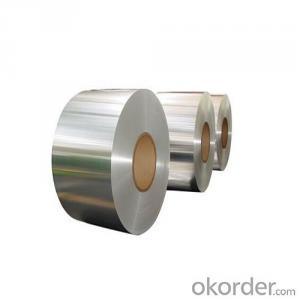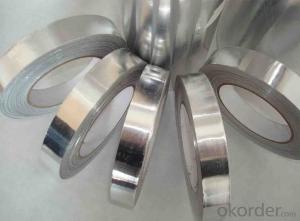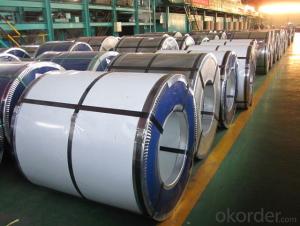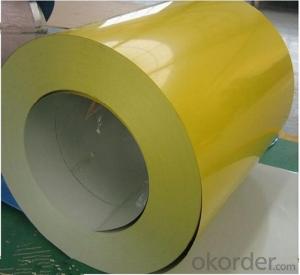Trane Aluminum Evaporator Coil
Trane Aluminum Evaporator Coil Related Searches
Led Light Bulbs For Ceiling Fixtures Led Lamps For Ceiling 42 In Ceiling Fan With Light Aluminum Coil Stock For Gutters Aluminum Foil For The Grill Hole Saw For Aluminum Plate Aluminum Tread Plate For Trailer Bow Plate For Aluminum Boat Aluminum Foil For Grow Room Aluminum Foil For Joint PainHot Searches
Stock Price For Aluminum Aluminum Coil Stock For Sale Aluminum Gutter Coil For Sale Used Aluminum Scaffolding For Sale 1/4 Aluminum Plate For Sale Aluminum Bar Stock For Sale Aluminum Round Stock For Sale Aluminum Diamond Plate For Sale Aluminum Scaffolding For Sale Craigslist 6061 Aluminum Plate For Sale Aluminum Dock Plate For Sale 7075 Aluminum Plate For Sale Aluminum Tread Plate For Sale Aluminum Checker Plate For Sale Aluminum Plate For Sale Near Me Plate Aluminum For Sale Aluminum Plate For Sale Aluminum Square Stock For Sale Aluminum Flat Stock For Sale Billet Aluminum Stock For SaleTrane Aluminum Evaporator Coil Supplier & Manufacturer from China
Okorder.com is a professional Trane Aluminum Evaporator Coil supplier & manufacturer, offers integrated one-stop services including real-time quoting and online cargo tracking. We are funded by CNBM Group, a Fortune 500 enterprise and the largest Trane Aluminum Evaporator Coil firm in China.Hot Products
FAQ
- Yes, aluminum coils can be used in vacuum applications. Aluminum is a commonly used material in vacuum systems due to its excellent properties such as low outgassing, high thermal conductivity, and good corrosion resistance. These properties make aluminum coils suitable for various vacuum applications, including but not limited to, vacuum chambers, vacuum pumps, cryogenic systems, and particle accelerators. However, it is important to note that aluminum can be reactive with certain gases or chemicals, so it is essential to consider the specific requirements and compatibility of the vacuum application before using aluminum coils.
- Yes, there are limitations to the maximum coil length of aluminum coils. The maximum coil length depends on various factors such as the thickness and width of the aluminum coil, the strength and tensile properties of the aluminum alloy, the equipment used for coil processing, and the intended application of the coil. One limitation is the strength and ductility of the aluminum alloy being used. Aluminum alloys with higher strength and lower ductility may have limitations on the maximum coil length due to the risk of coil breakage or deformation during processing or handling. Another limitation is the equipment used for coil processing. The maximum coil length is often determined by the size and capabilities of the equipment used for slitting, cutting, or forming the coils. If the equipment has a limited capacity or is not designed for longer coils, it may not be able to handle or process longer lengths effectively. The intended application of the coil can also impose limitations on the maximum coil length. For example, if the coil is intended for transportation purposes, such as in the automotive industry, there may be restrictions on the maximum coil length based on the size and weight limitations of the vehicles. Additionally, logistical factors such as transportation and storage can also impose limitations on the maximum coil length. Longer coils may be more difficult to handle, transport, and store, which can increase the risk of damage or pose challenges in terms of logistics and space requirements. Therefore, while there is no specific universal limit to the maximum coil length of aluminum coils, it is essential to consider various factors such as alloy properties, equipment capabilities, application requirements, and logistical considerations to determine the practical limitations of coil length for a specific situation.
- I want to paint my cars rims and grill metallic pink. But supposedly paint doesn't stick well to aluminum. What can I do to make it stick better and not chip?
- make sure the aluminum is ruffed up with at least 800 grit sand paper after that clean well and make sure is is dry after you clean after that use a product called adhesion promoter it will help the paint stick to the wheel hope this helps
- Yes, aluminum coils can be used for signage purposes. Aluminum is a durable and lightweight material that can be easily shaped and formed into various sign designs. Additionally, aluminum is weather-resistant and corrosion-resistant, making it suitable for both indoor and outdoor signage applications.
- The common fabrication techniques used for aluminum coils include rolling, annealing, slitting, and coating. Rolling is a primary fabrication technique that involves passing the aluminum through a series of rollers to reduce its thickness and achieve the desired shape. This process can be done using either hot rolling or cold rolling, depending on the specific requirements of the application. Hot rolling involves heating the aluminum to high temperatures, making it more malleable and easier to shape, while cold rolling is performed at room temperature. Annealing is another important technique used for aluminum coil fabrication. This process involves heating the aluminum to a specific temperature and then slowly cooling it down to enhance its mechanical properties. Annealing helps to relieve internal stresses, improve the aluminum's formability, and enhance its overall strength. Slitting is a technique used to cut wide aluminum coils into narrower strips. This process is typically performed using specialized machines that can slit the coils to the desired width. Slitting allows for more precise customization and can be used to produce coils of different widths to meet specific requirements. Coating is a common fabrication technique used to enhance the durability, corrosion resistance, and appearance of aluminum coils. Various coating methods, such as painting, anodizing, or powder coating, can be employed to provide a protective layer on the surface of the aluminum. This helps to prevent oxidation, improve weather resistance, and enhance aesthetic appeal. These fabrication techniques are commonly used in the aluminum industry to produce high-quality coils that can be further processed and utilized in various applications, including construction, automotive, aerospace, and electrical industries, among others.
- There are several coil coating options available for aluminum coils, including polyester, polyurethane, fluoropolymer, and plastisol coatings. Each option offers unique benefits, such as durability, weather resistance, and aesthetics, allowing for customization based on specific requirements or desired appearance.
- Yes, there are several safety considerations when handling aluminum coils. Firstly, aluminum coils can be heavy and unwieldy, so it is important to use proper lifting techniques or mechanical lifting equipment to avoid strain or injury. Secondly, aluminum coils can have sharp edges or corners, so it is important to wear protective gloves and use caution when handling them to avoid cuts or punctures. Additionally, aluminum can conduct electricity, so it is important to ensure that coils are properly grounded to prevent electrical shock. Furthermore, aluminum coils can be very slippery when wet or oily, so it is important to maintain a clean and dry working area to prevent slips, trips, and falls. Lastly, aluminum can react with certain chemicals, so it is important to handle and store coils away from incompatible substances to prevent any chemical reactions or hazardous situations. Overall, by following proper handling procedures, wearing appropriate personal protective equipment, and being aware of potential hazards, the risk of accidents and injuries when handling aluminum coils can be greatly reduced.
- Due to its unique properties and functionalities, aluminum coils play a vital role in energy-efficient lighting systems. The conductivity of aluminum is exceptional, enabling efficient energy flow within the system. This ensures minimal energy loss during transmission, thereby maximizing the overall energy efficiency. Additionally, aluminum coils are lightweight and sturdy, making them perfect for use in lighting systems. The lightweight nature of aluminum allows for effortless installation and handling, ultimately reducing the energy needed during manufacturing and installation. Furthermore, the durability of aluminum guarantees that the coils can endure the demands of daily use without compromising performance, thereby contributing to the longevity and efficiency of the lighting system. Moreover, aluminum possesses excellent thermal conductivity, enabling efficient heat dissipation. In lighting systems, managing heat is crucial as excessive heat can diminish the lifespan and efficiency of bulbs. By utilizing aluminum coils, the heat generated by the lighting system can be effectively dispersed, minimizing the risk of overheating and ensuring optimal performance. To summarize, aluminum coils enhance energy-efficient lighting systems by providing efficient electrical conductivity, lightweight and durable construction, and effective heat dissipation. These properties help minimize energy loss, reduce energy requirements during manufacturing and installation, and enhance the overall efficiency and lifespan of the lighting system.












































